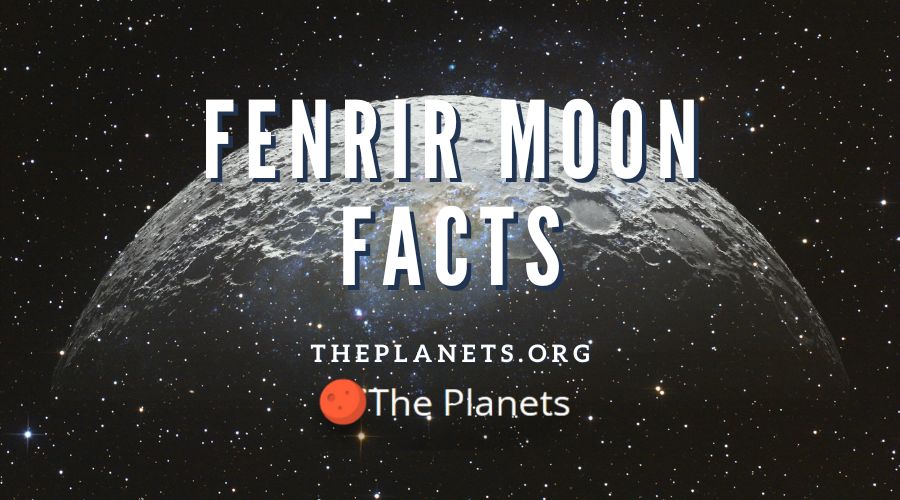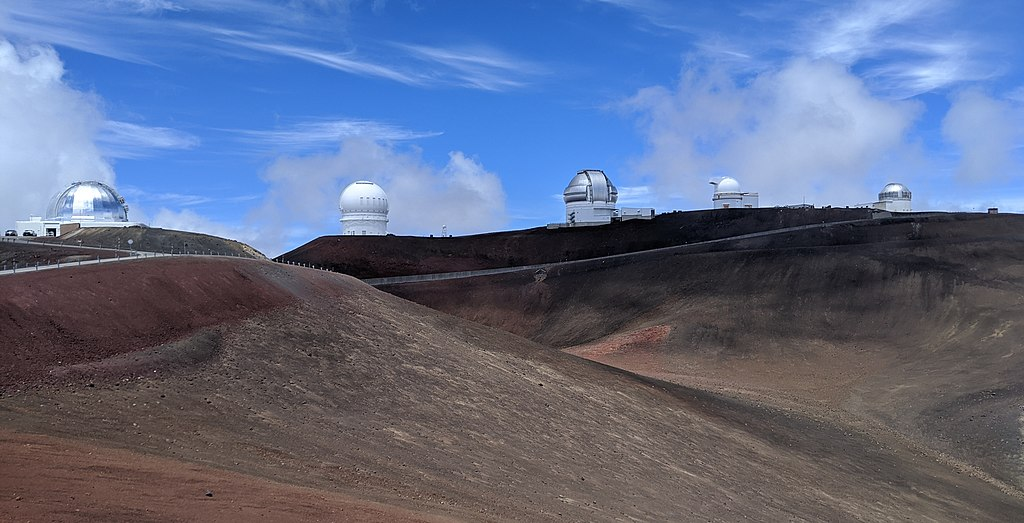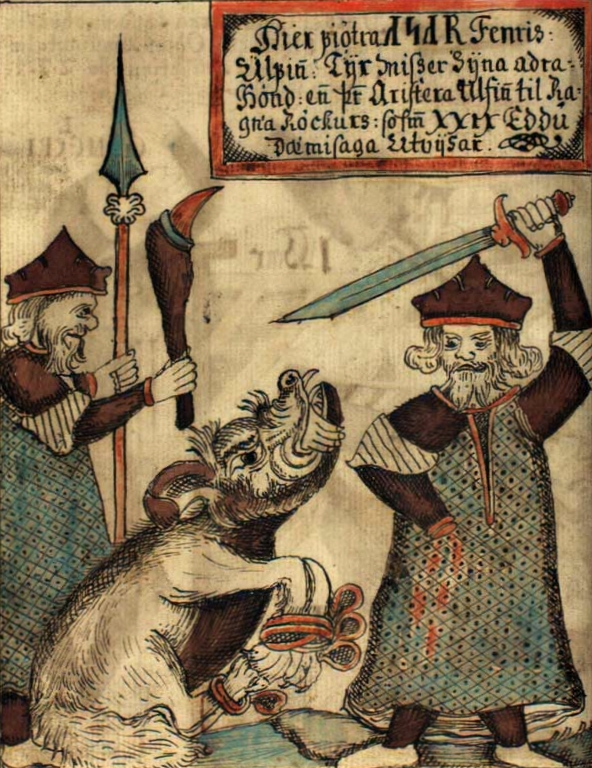
The Norse Moons
The Norse moons – of which Fenrir moon is a member – are a big group of irregular moons of Saturn. Remember that the irregular moons of Saturn are divided into three groups: the Inuit, Gallic, and Norse groups.
The Norse group is the largest among the three groups of irregular moons of Saturn. It has 46 members of retrograde moons, 25 of which are still not named. This group is also called the Phoebe group.
Phoebe is 213 km across. The second-largest moon with retrograde motion is Ymir, which is only roughly 18 km across.
Moons of the Norse group have semi-major axes from 12 to 24 million km. Their orbits are very inclined and eccentric. Their eccentricities are around 0.13 to 0.77 and their inclinations are between 136 and 175 degrees.
The Norse moons have common orbital characteristics. But with so many members, these moons are categorized further into smaller subgroups. Two of the identified subgroups so far are the Skathi and Narvi subgroups. More and more subgroups are expected to be identified as astronomers understand the nature of these moons better.
Below are the members of the two subgroups that were identified before 2019.
Skathi Subgroup
- Skathi
- Skoll
- Hyrrokkin
- Bergelmir
- Farbauti
- Kari
- S/2006 S 1
- S/2006 S 3
Narvi Subgroup
- Narvi
- Bestla
Fenrir Moon: Facts and Figures
All About the Name
- Pronunciation – /ˈfɛnrɪər/ or /ˈfɛnrər/
- Behind the name – Fenrisúlfr (A very big wolf in Norse mythology)
- Adjective/s – Fenrian
- Other designation/s – Saturn XLI
- Temporary designation – S/2004 S 16
Discovery Details
- Discoverer/s –
- Scott S. Sheppard
- David L. Jewitt
- Jan T. Kleyna
- Brian G. Marsden
- Discovery date – December 12, 2004
- Site of Discovery – Mauna Kea Observatories
Orbital Characteristics
- Parent planet – Saturn
- Orbital period – 1,260.35 days (3.45 years)
- Average orbit distance – 22,454,800 km
- Mean orbit velocity – 4,643.3km/h
- Eccentricity – 0.1332
- Orbital inclination – 164° (to the ecliptic), 143° (to Saturn’s equator)
Physical Features
- Equatorial radius – 2.0 km
- Equatorial circumference – 12.6 km
- Volume – 34 km3
- Density – 2.3 g/cm3
- Surface area – 50.27 km2
- Assumed Albedo – 0.04
- Apparent magnitude – 25.0
Fenrir Moon Features
Fenrir is a small irregular satellite of Saturn. It is one of the planet’s Norse moons. It had a ground-based discovery in December 2004. Another designation for this moon is Saturn XLI.
The name Fenrir was based on a monstrous wolf from Norse mythology who is the son of Loki. Before it was given the name, it was temporarily known as S/2004 S 16. This provisional designation indicates that it was the 16th new moon of Saturn discovered in 2004. We use the adjectival form Fenrian for this moon.
Fenrir has a retrograde orbit, that is, it moves in the direction opposite Saturn. There is still much that is not known about this small and distant moon. Astronomers assume that it has an albedo or reflectivity of 0.04. That means that it is a very dark body, even darker than Phoebe which has an albedo of 0.06.
How Did the Moon Fenrir Form?
Irregular natural satellites are believed to have formed differently from regular ones.
Regular moons formed and originated in the system of Saturn. They started as little balls of space dust that moved around the planet. They gather more debris as they did so, becoming bigger over time.
The irregular moons, including Fenrir, are more complicated. They did not form inside the system. These objects were just captured by Saturn’s gravity. It is not yet clear where they are from.

Fenrir Moon – Discovery
The moon Fenrir was discovered on December 12, 2004. It was discovered by three astronomers, Scott S. Sheppard, David L. Jewitt, and Jan T. Kleyna. They discovered this little moon in Mauna Kea Observatory in Hawaii where they used the Subaru reflector telescope.
The astronomers observed Fenrir from December 13, 2004, to March 5, 2005. This moon’s orbital elements were computed by Brian G. Marsden. The discovery was publicly announced on May 4, 2005.
Did You Know?
Sheppard, Jewitt, and Kleyna discovered 11 other moons alongside Fenrir.
Fenrir Moon – Characteristics
Orbit
Fenrir moon is a distant moon. It orbits Saturn at an average distance of 22.5 million km or 14 million miles. With this distance, it takes this moon more than one thousand days to complete a trip around the ringed planet.
Fenrir’s orbit not only has a large radius, but it is also eccentric and highly inclined. With an eccentricity of 0.1332, we know that this orbit is not circular. It is inclined by 164° to the ecliptic and 143° to the equator of its parent planet.
Size
Fenrir is a small astronomical body that is about 4.0 km across. It is about 53 times smaller than Phoebe, which is the largest irregular moon known in the Saturnian system. If we compare it to Titan, it is even much smaller by more than 1,200 times.
Apparent Magnitude
Aside from being a dark body, Fenrir is also very faint. We cannot see it with the naked eye because its apparent magnitude is 25. It is one of the faintest natural satellites in our solar system. In fact, because it was very faint, the Cassini aircraft was not able to observe this moon.
Other Properties
The irregular moons are still a mystery for the most part, including Fenrir. Its mass is not yet known. Some other measurements known about this moon is its equatorial circumference which is 12.6 km. It has a surface area of 50.27 km2 and its volume is 34 km3.
Behind the Name
Fenrir or Fenrisúlfur (Fenris-wolf) is a Norse wolf. It was stated in Poetic Edda that he would play a great role during the great battle of Ragnarök.
The giant wolf was destined to kill the revered god Odin, but he would also lose his life by doing so. Odin’s son, Víðarr, would go after him and take his life as an act of revenge for killing his father.
Fenrir fathered two wolves named Sköll and Hati Hróðvitnisson. In Norse mythology, Sköll chases the sun across the sky while Hati chases the moon.

Fenrir in Norse Mythology
As mentioned in Prose Edda, the mightly wolf Fenrir is the son of the god Loki and the giantess Angrboða. His siblings are Jörmungandr (the World Serpent) and Hel (Underworld). The three children are considered to be monsters that will soon bring disasters upon the Nine Worlds.
Upon hearing about them, Odin ordered the gods to bring the children to him. The Æsir (Odin, Frigg, Höðr, Thor, Baldr, and Týr) immediately got rid of Jörmungandr and Hel when they arrived. However, they brought Fenrir home.
Tyr fed the wolf but noticed that Fenrir was growing fast. The gods feared the wolf because the prophecies foretold that he would kill Odin. They devised a plan and made three fetters to restrain him.
The first one was called Leyding. It was nothing against the strong wolf as it snapped instantly when Fenrir kicked. The gods tried the second fetter, named Dromi. They told the wolf that he would become famous if he breaks it. The wolf allowed them to put it on him and snapped it again.
The Æsir were afraid that Fenrir would be totally unmanageable so they asked for help from some dwarfs to make the third fetter. The third one was a silken fetter called Gleipnir. They asked Fenrir to try it again and that he would be able to snap it just as he did with the others.
Fenrir sensed that something was going on but did not want them to question his courage. So, as an assurance, he asked the gods to have someone put a hand on his mouth.
No one was willing to put their hands into the wolf’s mouth. Tyr stepped forward and put his hand on Fenrir’s jaws. Unluckily, he lost his hand as the wolf struggled against Gleipnir. The gods then used a cord and fastened Fenrir to a rock where he would stay until Ragnarök.
Statistical Sources:
- https://solarsystem.nasa.gov/moons/saturn-moons/fenrir/in-depth/
- https://solarsystem.nasa.gov/moons/saturn-moons/fenrir/by-the-numbers/
- https://en.wikipedia.org/wiki/Fenrir_(moon)
- https://en.wikipedia.org/wiki/Saturn%27s_Norse_group_of_satellites
- https://en.wikipedia.org/wiki/Fenrir
Image Sources:
- Mauna Kea Observatories: https://commons.wikimedia.org/wiki/File:Mauna_Kea_Summit_2021-06-16_33_(cropped).jpg
- The binding of Fenrir: https://commons.wikimedia.org/wiki/File:Treated_NKS_fenrir.jpg